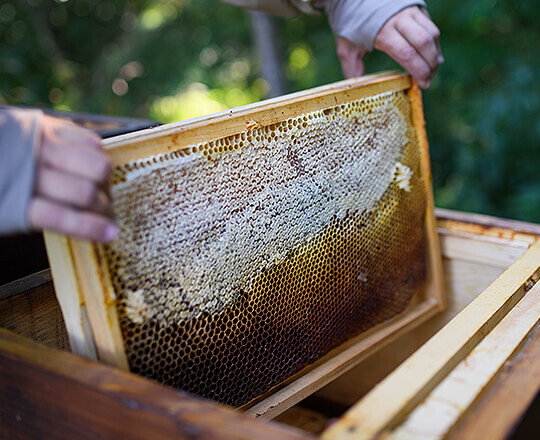Raw honey has been used throughout history and has a variety of health benefits and medical uses.
Bees make this product from not just nectar but also from other plant substances like tannins, saps, volatiles, essential oils and phytonutrients, and bacteria from their second honey-carrying stomach. This mix is unique. Bees have developed their skills over millions of years to target a hive temperature of about 35 to 36 degrees Celsius. Wow, that's about our body temperature!

Why grocery store honey isn't up to standard
Honey in grocery stores is generally pasteurized supposedly for the following reasons - the high heat kills unwanted yeast, can improve the colour and texture, removes any crystallization, and extends the shelf life. We don’t agree with this reasoning, particularly as many of honey’s unique properties and beneficial nutrients are destroyed by this processing.

Even if you could forgive the big companies for their processing, with each batch of honey being different and its taste a supple mixture of flavours, you can’t forgive the bulk blending to produce uniformity. Different honeys are like good wines and should be admired for their differences.
“If you’re interested in trying raw honey, you might consider buying it from a trusted local apiarist. You’ll be getting honey made from local flora and supporting local business.”
The benefits of raw honey
Raw honey contains an array of plant chemicals that act as antioxidants.
Generally, one tablespoon or 21 grams of raw honey contains 64 calories and 17
grams of sugar. Raw honey also contains smaller amounts of the following
micronutrients (or, vitamins and minerals):
- Calcium
- Magnesium
- Manganese
- Niacin
- Pantothenic acid
- Phosphorous
- Potassium
- Riboflavin
- Zinc
In addition, raw honey is a source of varying amounts of amino acids, enzymes,
and other beneficial compounds.

